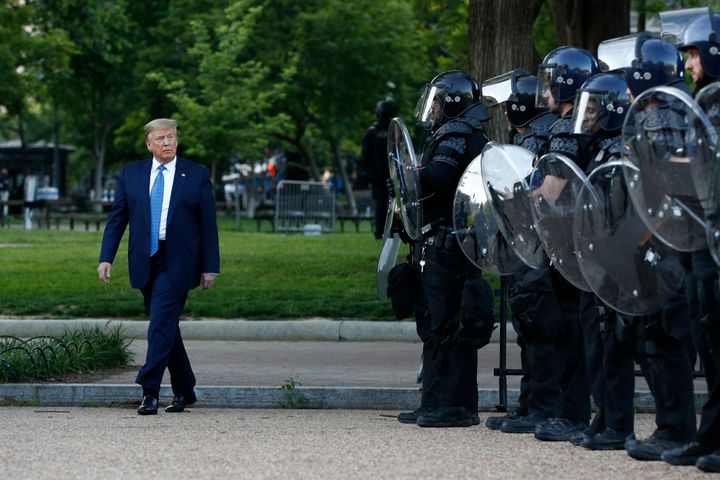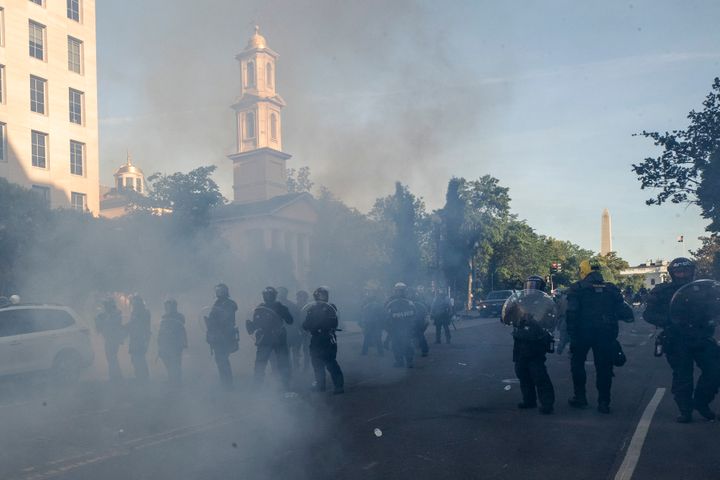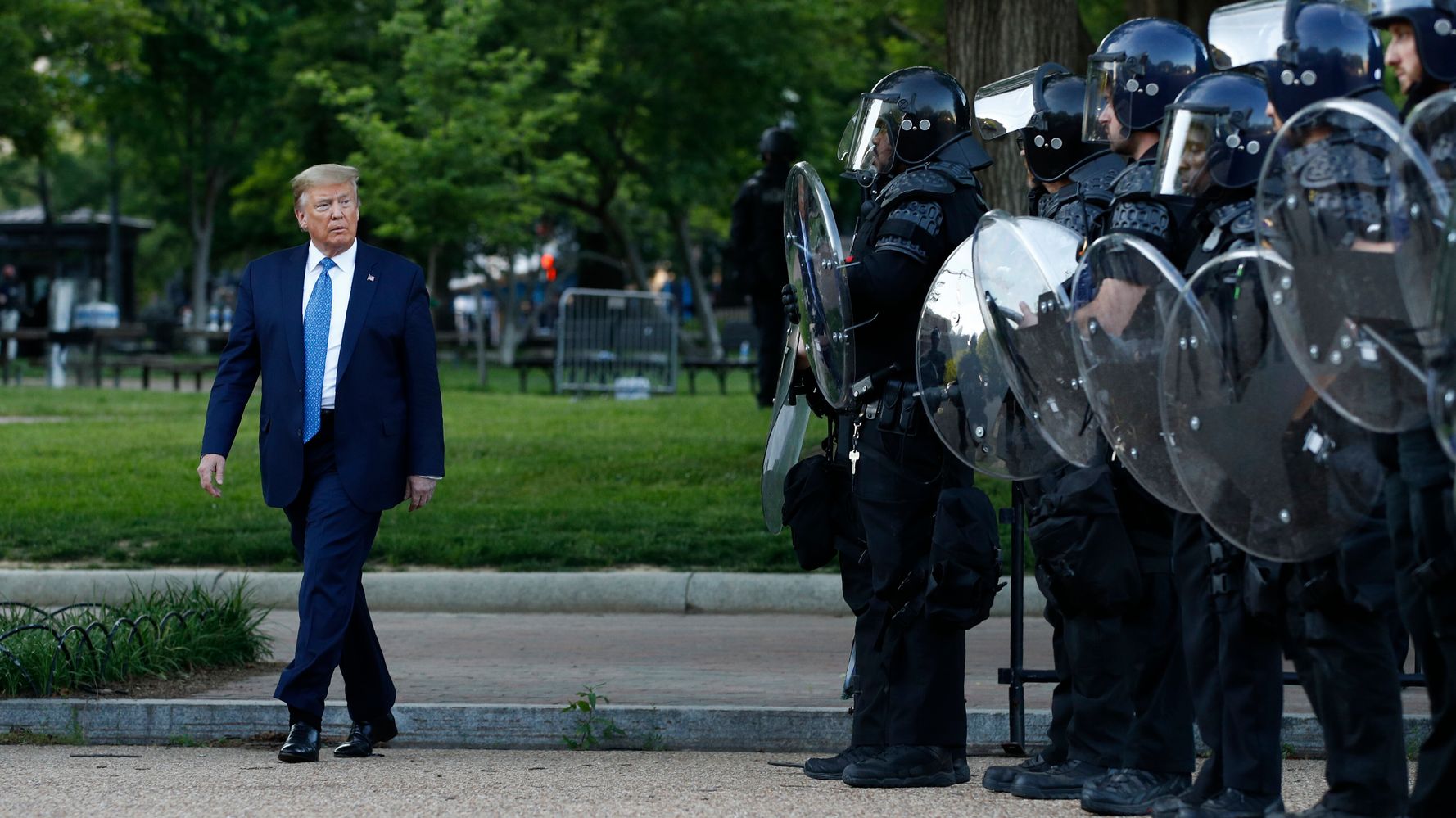[ad_1]
Attorney General William Barr defended the use of force against peaceful anti-racism protesters outside the White House last week, saying the demonstrators “were not peaceful” and that their dispersal was unrelated to the president’s photo-op at a nearby church.
In a sit-down interview with CBS News, Barr accused protesters gathered around Lafayette Square on June 1 of throwing projectiles at officers and ignoring three warnings to vacate the area before physical force was used on them.
“They were not peaceful protesters. And that’s one of the big lies that the media is, seems to be perpetuating at this point,” he said.

Barr said the decision to clear the street along Lafayette Park followed an overnight request by Park Police, which wanted to erect a more permanent fence due to earlier acts of violence and destruction by demonstrators on Friday, Saturday and Sunday.
Barr said he agreed Monday morning to help coordinate a federal response to protesters ― including having active-duty troops on standby ― and also made the decision to clear the streets.
“That decision was made by me in the morning. It was communicated to all the police agencies, including the Metropolitan Police at 2:00 p.m. that day,” he said.
The fact that the order was carried out just minutes before President Donald Trump walked across Lafayette Park for a church photo-op was not related, he said.
“The effort was to move the perimeter one block, and it had to be done when we had enough people in place to achieve that,” Barr said. “I gave the green light at two o’clock. Obviously, I didn’t know that the president was going to be speaking later that day.”
Barr’s admitted order of approval to CBS follows him earlier insisting, in an interview Friday with The Associated Press, that he wasn’t the one who ordered the officers to proceed. He said it was a Park Police tactical commander.
“I’m not involved in giving tactical commands like that,” he told the AP. “My attitude was, get it done, but I didn’t say, ‘Go do it.’”
Video taken in Lafayette Park just after 6:30 p.m. captured a line of officers approaching protesters before charging forward amid smoke and loud bangs. People are seen scrambling amid the chaos. Some fall to the ground and some are seen being beaten with police batons and riots shields.
Barr said the weapons and physical force used against the protesters were appropriate because the officers “met resistance.” He added that chemical irritants were not used, as some have claimed, since “pepper spray is not a chemical irritant.”
The White House has also repeatedly denied that rubber bullets and tear gas were used.
“Sometimes you have to move peaceful demonstrators for a short distance in order to accomplish public safety, and that’s what was done here,” Barr said. “You have qualified [law] enforcement officials with shields, moving slowing. They had mounted officers moving slowly.”
The denied use of chemical irritants and rubber bullets has been disputed by those at the scene, including reporters who collected some of the canisters and projectiles deployed by officers and had them tested.
Brian Castner, a former military explosives disposal expert who analyzed some of the canisters and casing for local station WUSA9, identified some of them as Stinger Ball Grenades.
“Not only does it have a flashbang effect, but it also has a little bit of tear gas inside of it. Some also have some pepper spray, depending on – there’s a couple models,” he said.

These incendiary devices also feature rubber pellets that shoot out, he said.
“And of course, the problem with that is, there’s no target. It could hit anyone. It could hit anywhere. It could hit you in the eye, or the throat. There’s no way for the police to be really targeted in trying to focus on a specific person or a specific action,” he said.
Calling all HuffPost superfans!
Sign up for membership to become a founding member and help shape HuffPost’s next chapter
[ad_2]
Source link

